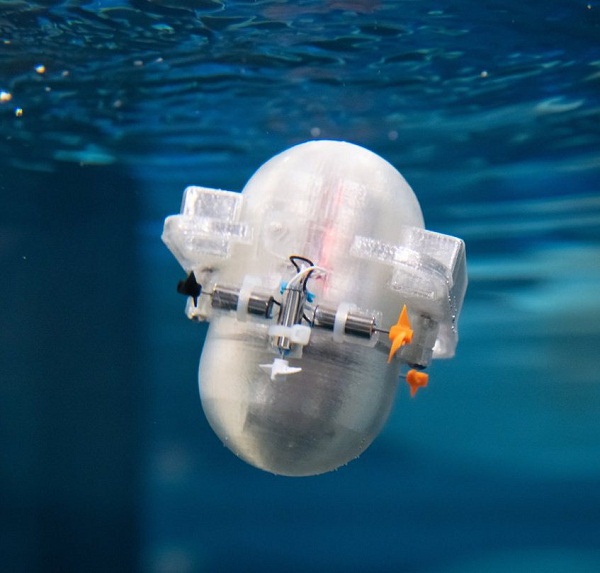Engineers from California Institute of Technology (CalTech) have developed an AI algorithm intended to help an autonomous drone to swim, using ocean currents to aid its navigation. Eventually, these seaborne robots could explore oceans on Earth and other worlds, such as Europa, monitoring the conditions of environments that humans cannot reach.

“Instead, at a certain point we need ocean-borne drones to be able to make decisions about how to move for themselves.”
These drones would need to be able to make decisions on their own about where to go, but also the most efficient way to get there. To do so, they will likely only have data that they can gather themselves: information about the water currents they are currently experiencing.
The engineers, therefore, developed an algorithm that would allow the drone to steer itself while swimming. For this, they used reinforcement leaning networks. Compared to conventional neural networks, reinforcement learning networks do not train on a static data set, but rather train as fast as they can collect experience.
This scheme allows them to exist on much smaller computers. To test their algorithm, the team wrote software that can be installed and run on a “Teensy” (a microcontroller that anyone can buy for less than $30 on Amazon and which runs on a half watt of power). These sorts of microcontrollers can fit on a palm-sized prototype robot – which they used alongside computer simulations to test their work – mimicking the hardware of possible future seaborne drones.
This kind of navigation is, the engineers say, analogous to the way eagles and hawks ride thermals in the air, extracting energy from air currents to manoeuvre to a desired location with the minimum energy expended. Surprisingly, the researchers discovered that their reinforcement learning algorithm could learn navigation strategies that are even more effective than those thought to be used by real fish in the ocean.
“We were initially just hoping the AI could compete with navigation strategies already found in real swimming animals, so we were surprised to see it learn even more effective methods by exploiting repeated trials on the computer,” said Dabiri.
The technology is still in early stages; currently, the team would like to test the AI on each different type of flow disturbance it would possibly encounter on a mission in the ocean – for example, swirling vortices versus streaming tidal currents – to assess its effectiveness in the wild. However, by incorporating their knowledge of ocean-flow physics within the reinforcement learning strategy, the researchers aim to overcome this limitation.
“Not only will the robot be learning, but we’ll be learning about ocean currents and how to navigate through them,” says Peter Gunnarson,
Source: E&T










